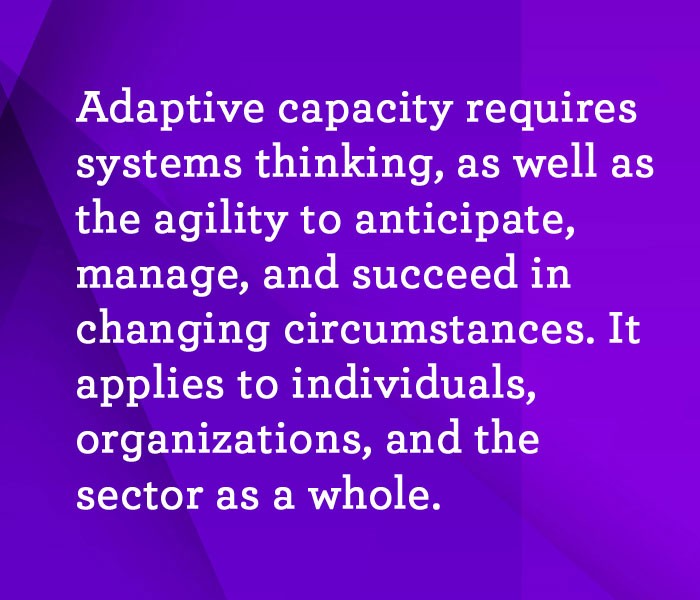- Home
- About Us
- The Team / Contact Us
- Books and Resources
- Privacy Policy
- Nonprofit Employer of Choice Award

 Part of our challenge in the nonprofit sector is that we can’t easily see ourselves. We’re like fish in the ocean who can’t see the water they’re swimming in. We’re surrounded by our work in virtually every community in the country, but we’re too busy and so dispersed in our efforts that we can’t see our positive influence or collective potential.
Part of our challenge in the nonprofit sector is that we can’t easily see ourselves. We’re like fish in the ocean who can’t see the water they’re swimming in. We’re surrounded by our work in virtually every community in the country, but we’re too busy and so dispersed in our efforts that we can’t see our positive influence or collective potential.
Earlier this year, I read a book by Eric Liu called You’re More Powerful Than You Think: A Citizen’s Guide to Making Change Happen that provides a provocative look at how citizens and community groups can make change happen. And while the references are American, the book’s lessons apply just as well in Canada: think like a movement; scale out, across the community, not up, like a start-up preparing to be gobbled up by a larger enterprise.
In many respects, this is the kind of thinking we’ve embraced in our new Calgary Chamber of Voluntary Organizations report: Thinking Differently: Adaptive Capacity in the Nonprofit Sector. We started by examining the state of capacity building in our community, with a view to analyzing prospects on the near-term horizon. Our study led us even further, providing insights that we believe are relevant and applicable well beyond our city.
We embraced the framework of capacity building 3.0, which includes a clarion call for systems thinking. Capacity building 1.0 is focused on the individual, seeking to ensure that the skills and competencies to succeed are acquired through training, education, professional development, coaching and mentoring. Meanwhile, capacity building 2.0 operates at the organizational level, building functional capacity in essential areas such as finance, human resources, fundraising, IT, etc. And 3.0 deals with the sector requiring collaboration with networks, alliances and coalitions.
Of course, we need to advance on all three levels. The benefit of capacity building 3.0 though is that it requires a more strategic approach and longer-term thinking, taking us beyond the short-termism that afflicts so much of our world today.

We believe that a 3.0 approach is significantly boosted by building adaptive capacity. Given an uncertain political and economic future and rapidly changing social and technological environments, the status quo is simply not an option. Adaptive capacity requires systems thinking, as well as the ability to anticipate, manage and succeed in changing circumstances. Applied to the nonprofit sector, it also holds the potential for us to influence the trends shaping our world.

How do we get there? It’s our view that we need to think differently and continue the conversations about a coordinated strategy for capacity building, increase the investment in adaptive capacity, create a digital community for capacity building in our sector and, also, foster a genuine culture of innovation.
We’re confident that through more dialogue and more effective collaboration, we’ll develop the resilience needed to champion the social good our sector seeks to achieve.
David Mitchell is President and CEO of the Calgary Chamber of Voluntary Organizations. Please see CCVO’s report: Thinking Differently: Adaptive Capacity in the Nonprofit Sector.